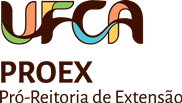Submissions
Submission Preparation Checklist
As part of the submission process, authors are required to check off their submission's compliance with all of the following items, and submissions may be returned to authors that do not adhere to these guidelines.- The contribution is original, previously unpublished, and not under consideration for publication by any other journal; if not, justify in “Comments for the Editor” session.
- The submission file is in Microsoft Word format, according to the models available for Article, Extension Report or Interview.
- Or the text is in the space between the 1.5 lines; uses a 14-point font; uses italics instead of underlining (except URL addresses); figures and tables are inserted in the text, not at the end of the document in the form of attachments.
- The text must follow the style and bibliographic standards described in Instructions for Authorsin the “About the Journal” section.
- In case of submission to a peer-reviewed section (eg, articles), the available instructions in Ensuring Blind Peer Review were followed.
- The manuscript has a production of knowledge about the University Extension.
- It's an article or an extension report at least with a minimum of 10 (ten) and a maximum of 15 (fifteen) pages, or an interview with a minimum of 2 (two) and a maximum of 10 (ten) pages
- Quotations, graphics, tables, charts, and references are according to ABNT (Brazilian Association of Technical Standards).
- It must contain the ABSTRACT in Portuguese and English, both with a maximum of 250 words, without using paragraphs. It must be succinct and very clear, highlighting the most important results.
- Contains keywords.
Articles
It is an original text with an evident contribution to the development of the area related to the University Extension, aiming the dialogue between the University and the Society.
Extension Reports
It's a text that reports the researchers' activities and experiences with the community, results of the in-progress or completed extension projects, and its focus, in particular, must be into the relationship of the extension process with the society.
Interviews
It's a text that talks about content related to some university extension project, and the interviewed people need to be exemplary for the discussion about the purpose and process of extension in society.
Copyright Notice
Authors who publish in this journal agree to the following terms:
- Authors hold the copyright and grant the journal the right for their articles' first publication.
- Authors are allowed to enter into separate additional contractual arrangements for the non-exclusive distribution of the journal's published version of the paper (e.g., post it to an institutional repository or as a book chapter, with an acknowledgment of its initial publication in this journal).
Privacy Statement
The names and addresses provided for this journal will be used exclusively for the services provided by this publication and won’t be available for other purposes.
















